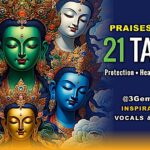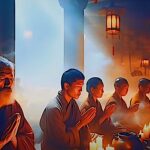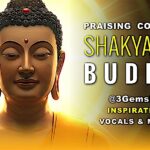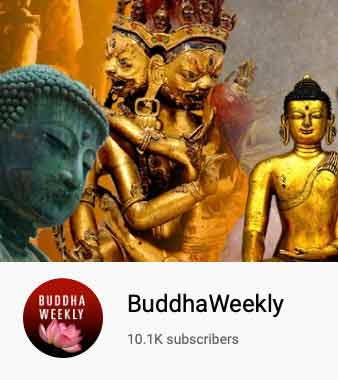Obon Festival: Ancestor Day
Obon Festival is an annual Japanese ritual observed from the 13th to the 15th of the seventh lunar month. This year, the holiday will be celebrated from August 13 to 15.
 Obon Festival Ancestor Day Japan
Obon Festival Ancestor Day Japan
Obon is similar to Mexico’s Day of the Dead and China’s Hungry Ghost Festival. During the three-day festivities, the Japanese welcome the spirits of their dead ancestors and rekindle their connections. Although it’s a festival cherishing death, Obon is more fun than creepy. People engage in fun activities, folk dance, and music events. They visit and clean the graves of the ancestors, light ‘chochin’ lanterns, and eat traditional dishes.
From Midwest Buddhist Temple, Jodo Shinshu Buddhism:
“There is not a recognized translation of the word Obon. “Bon” is part of the sound of the Japanese pronunciation of the Ulambana Sutra, and “O” is the Japanese honorific placed in front of important words. In the Ulambana Sutra, a disciple of the Buddha, Mogallana danced with joy after understanding the true meaning of Compassion. Obon is also known as Kangi-e, which means “gathering joy” in Japanese.
Over the centuries, a festival became included with the Obon Service. The festival included local folk music and dance (Obon Odori) in which a town or village or temple would dance in memory of their ancestors.
Hatsu-bon or First Obon, is important for families who have lost a loved one in the previous year. This observance would be the first Obon since the passing, and the Obon Odori is a way of expressing gratitude for the benefits our loved ones have already shared with us. The Hatsu-bon is also a physical expression of both the grieving and the joy of spiritual understanding.”
“Obon is a 500-year-old Buddhist custom observed to honor one’s ancestors. It is sometimes referred to as the festival of souls. It’s believed that spirits descend to earth to reunite with their living family. There’s a legend associated with the history of Obon. A Buddhist monk named Mogallana, who could see into the afterlife, prevented his dead mother from going to hell by making offerings to other monks. Having attained redemption on behalf of his mother, Mogallana started dancing in joy and the others joined him forming a big circle. This dance form came to be known as the Bon Odori dance.
Although Obon has some parallels with Halloween, it doesn’t intend to ward off spirits. Rather, the Japanese seek to welcome the souls of their ancestors by preparing delicacies and performing Bon Odori. Many also visit the tombstones of their family members and polish the surfaces. They donate flowers, candles, incense sticks, and fruits to local temples and at altars. On the last day of Obon, one is supposed to see off their ancestors by releasing sky lanterns or by burning a bonfire.
Kyoto organizes the biggest bonfires over the Daimonji Mountain. Huge effigies of kanji characters, measuring a width of 5.2 feet, are lit by Buddhist monks. The Japanese believe that the light from the fire guides the spirits back to the afterlife. If you want to experience it in Japan, the most popular spots to visit are Shikoku, Kyoto, Hokkaido, and Nagasaki. Outside of Japan, Obon is celebrated with great fervor in the U.S. and Brazil. These celebrations occur mostly in homes and Buddhist temples. Cultural and food bazaars are also held.”
Calendar
Dharma Dates
 Loading…
Loading…Please support the "Spread the Dharma" mission as one of our heroic Dharma Supporting Members, or with a one-time donation. Learn more>>





